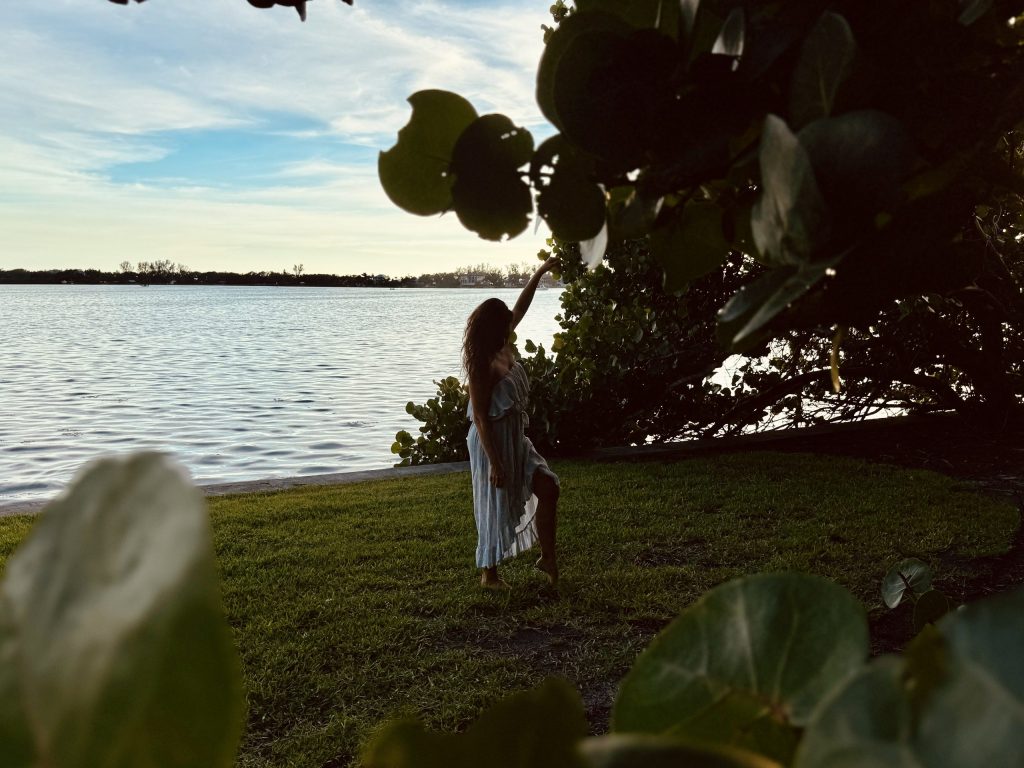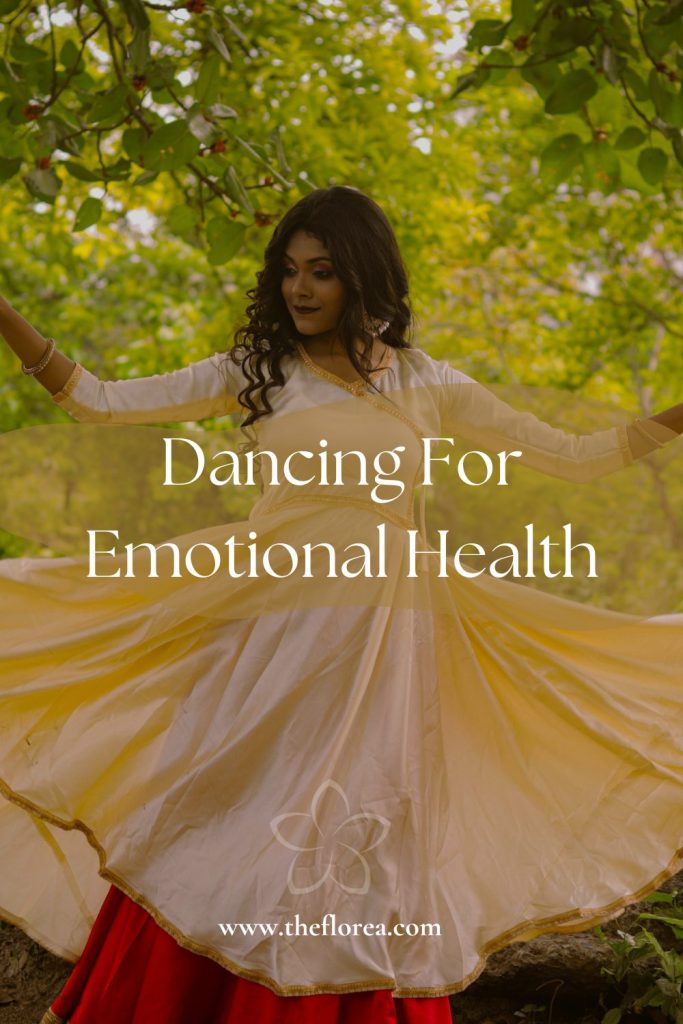Dancing for Emotional Health:
How Movement Can Calm Anxiety and Boost Your Mood

Dancing For Emotional Health
Have you ever put on a song you love and felt your whole mood shift within minutes?
For me, that’s the magic of dancing—it’s not just movement, it’s medicine. I’ve turned to dance in some of my most anxious, restless moments, and every time it’s brought me back into my body, into the present, and into a sense of calm I couldn’t think my way into.
Even though I was a semi-professional dancer, I don’t follow choreographed routines or count steps. My practice is intuitive and deeply personal—what some call somatic movement. I let the music guide me, I let my body respond, and somewhere in that flow, my mind starts to quiet.
In this post, I want to share why dancing is such a powerful tool for emotional health and anxiety relief, and how you can use it too—even if you’ve never thought of yourself as “a dancer.” Because in truth, your body already knows how to move—you just have to give it permission.
Why Dancing Is Good for Emotional Health
1. Releases Endorphins and Boosts Mood
When you dance, your body releases endorphins—the feel-good chemicals that help lift your mood and create a sense of happiness. Even just 5–10 minutes of moving to music you love can shift your emotional state. For those of us who struggle with anxiety or low mood, this natural mood boost can feel like a lifeline.
2. Reduces Stress and Cortisol Levels
High stress often means elevated cortisol levels, which can leave you feeling tense, restless, and overwhelmed. Dancing has been shown to reduce cortisol in the body, creating a calmer and more grounded feeling. It’s a gentle yet effective way to release accumulated tension.
3. Helps Process Emotions Somatically
Many times, anxiety isn’t just in the mind—it’s stored in the body. Somatic practices like dance work with the nervous system to release this stored energy. Through movement, you can express emotions that words can’t always reach, allowing you to feel lighter and more at peace.
4. Increases Mind-Body Connection
When anxiety takes over, it’s easy to get stuck in your head and disconnected from your body. Dancing brings your awareness back into the present moment, grounding you in the sensations of your body and helping you feel more centered.
5. Encourages Self-Expression and Confidence
Dancing allows you to express yourself freely without judgment. This creative expression can improve self-esteem, help you feel more comfortable in your own skin, and remind you that joy and play are important parts of emotional well-being.

The Science of Dance and Anxiety Relief
Research shows that dance engages multiple parts of the brain, including areas linked to memory, emotion, and motor control. This multi-sensory engagement helps distract the mind from anxious thoughts and creates a more balanced mental state.
A 2021 study in Frontiers in Psychology found that participants who engaged in dance movement therapy reported significantly reduced anxiety, depression, and stress levels. This is because dance combines physical activity, emotional expression, and social connection (if done in a group), all of which are known to improve mental health.
From a somatic perspective, anxiety often involves a heightened sympathetic nervous system response (fight, flight, or freeze). Gentle, rhythmic movement like dancing can help shift the body into a parasympathetic state (rest and digest), making it easier to relax.
If you want to dive even deeper into natural ways to soothe your mind and body, check out my eBook, Natural Peace: A Manual for Stress and Anxiety Relief. It’s packed with holistic tips, herbal remedies, and somatic practices you can start using today. If you’d like to support my work, purchasing this book is a wonderful way to do so—and I’d truly appreciate it. Get your copy here.
How I Use Dancing as a Somatic Practice to Calm Anxiety
For me, dancing isn’t just about moving my body to music. It’s a form of self-care, a ritual that helps me reset my mind and reconnect to myself. Here’s how I use it:
1. Create a Safe Space
I choose a comfortable space where I can move freely without distractions. This could be my living room, a yoga studio, or even outdoors in nature. I dim the lights, light a candle, or use essential oils to create a calming environment.
2. Choose Music That Matches My Mood
If I’m feeling anxious, I start with slower, grounding music and gradually move to more uplifting tracks. Sometimes, I use songs that match my emotional state so I can fully express what I’m feeling before transitioning into a calmer rhythm.
3. Focus on Sensation, Not Performance
This is key. I don’t dance to look a certain way; I dance to feel. I notice how my feet connect with the ground, how my breath changes with movement, and how different motions release different sensations in my body.
4. Let the Body Lead
Instead of planning steps, I allow my body to move however it wants—twisting, swaying, shaking, or jumping. This intuitive approach helps me bypass overthinking and connect directly to my body’s wisdom.
5. End with Stillness
After 10–20 minutes of movement, I slow down and find stillness, placing my hands over my heart or belly. I take deep breaths, noticing how much more calm and grounded I feel.
Tips for Using Dance to Support Your Emotional Health
- Start Small: Even 5 minutes a day can make a difference.
- Use It as a Morning Reset or Evening Wind-Down: Dance to energize yourself in the morning or release the day’s stress before bed.
- Try Different Styles: Explore ecstatic dance, free movement, or even traditional dances from different cultures.
- Join a Class or Community: Dancing with others can boost mood and provide social support.
- Combine With Other Practices: Pair dance with breathwork, meditation, or journaling for a deeper emotional release.
Conclusion – Movement as a Path Back to Yourself
When I think about the role dancing has played in my life, it’s more than just exercise—it’s been a lifeline. It’s where I’ve gone to let go of stress, to cry without words, to laugh without reason, and to remember what joy feels like in my bones. In those moments, I’m not thinking about anxiety—I’m feeling alive.
Dancing is more than just a fun activity; it’s a powerful form of movement therapy that can help reduce anxiety, improve emotional well-being, and bring more joy into your life. By approaching dance as a somatic practice, you can reconnect with your body, release tension, and cultivate a sense of calm and balance.
Whether you dance in your living room, join a class, or move freely in nature, remember: you don’t have to be a dancer to experience the healing power of movement. Your body already knows the steps—you just have to let it lead.
And if you’re ready to explore even more ways to calm your mind and body naturally, grab my eBook Natural Peace: A Manual for Stress and Anxiety Relief here. If you’d like to support my work, purchasing this guide is a beautiful way to do so—and I’m so grateful for your support.
If you’re ready to explore dancing as a self-care tool, put on your favorite song today, close your eyes, let the rhythm guide you and give yourself permission to move without judgment. You might be surprised how much lighter you feel when the music stops. Your mind and body will thank you.

